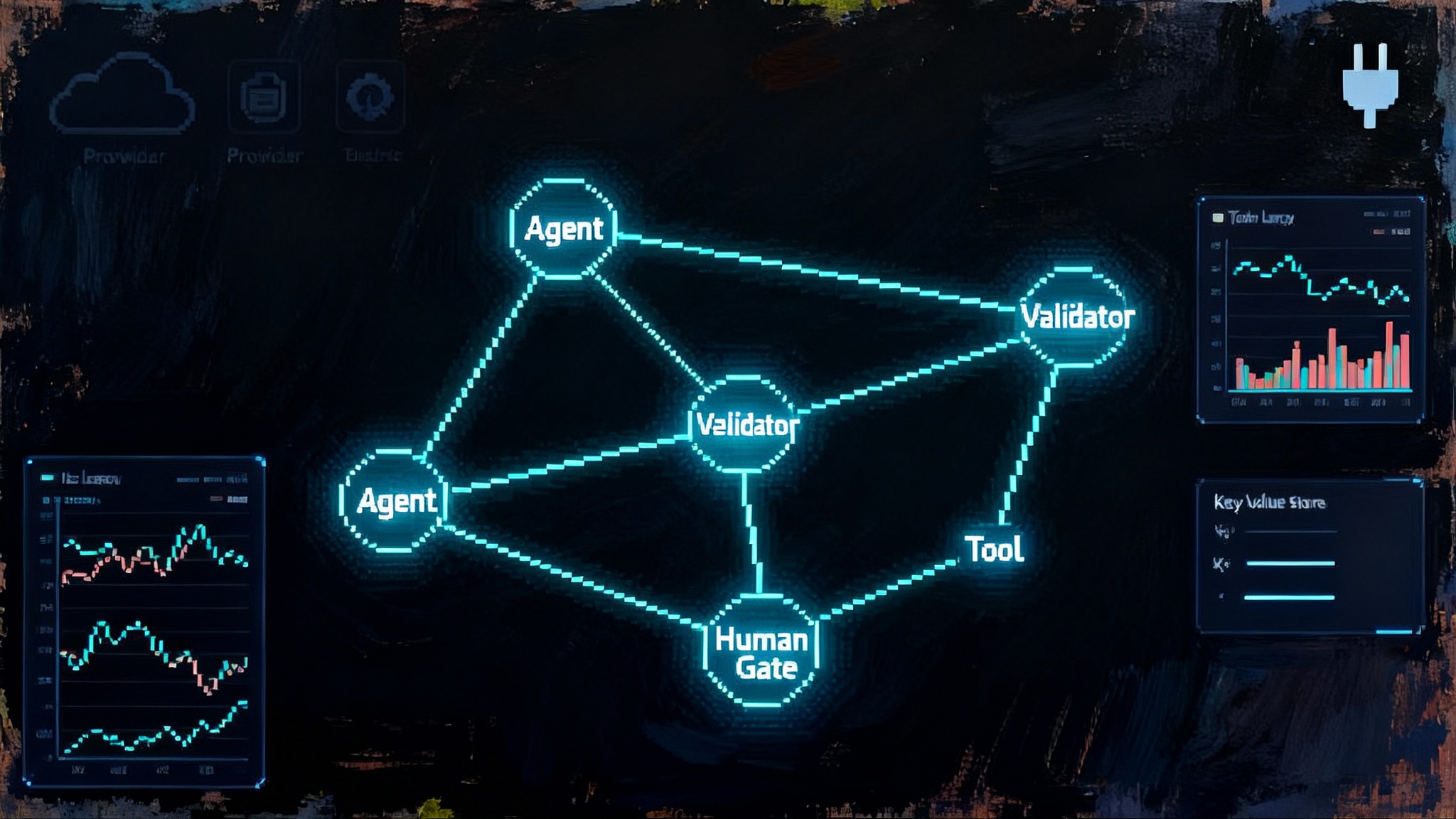Salesforce gives AI agents a voice for talk to work
Salesforce is preparing voice-native, hybrid-reasoning agents that can listen, speak, plan, and act across your stack. Here is what it means for contact centers, how it compares to ServiceNow and Sierra, and a 90-day playbook to deploy safely.

The moment voice meets work
Salesforce is giving its AI agents a voice and a brain that blends different ways of thinking. The company is preparing to roll out voice-native, hybrid-reasoning agents that can listen, speak, plan, and act across a customer’s stack. That combination moves enterprise AI from typing to talking, from chat windows to calls that get work done in real time. The timing matters. According to reporting on the eve of Dreamforce, Salesforce will introduce both voice capabilities and hybrid reasoning that can capture emotional nuance and orchestrate more complex tasks than single-model chatbots ever could. If it delivers, “talk to work” becomes a reality, not a demo. Salesforce to unveil voice and hybrid reasoning.
This voice push did not come out of nowhere. Salesforce has spent the past year turning Agentforce into a platform for autonomous work, while stitching together the pieces required for real conversations at scale. The acquisition of voice agent talent and the steady expansion of out-of-the-box actions set the stage. The missing piece was a voice that sounds human enough to build trust and reasoning that is resilient when the call goes off script. That is what hybrid reasoning and affect-aware speech aim to unlock.
Why voice is finally the primary interface for service
Most contact centers already know the truth that product teams sometimes forget. Customers still pick up the phone when something matters. Voice is fast, personal, and expressive. In a high-stakes moment like a payment failure, a flight rebooking, or a medical benefits question, waiting for a typed response feels wrong. Talking lets customers convey urgency through tone, pacing, and silence, not just words.
Historically, automated voice experiences were brittle. Interactive Voice Response menus forced callers into rigid branches. The minute a customer said something unexpected, the system failed. New voice agents promise a different baseline. They can parse overlapping speech, repair errors on the fly, and use prosody to convey empathy. Think of it like replacing a telephone tree with a front-desk professional who can both talk and walk into back-office systems to fix the problem.
The big unlock is not only automatic speech recognition and text-to-speech. It is the ability to fuse language models with planners, tool callers, retrieval engines, guardrails, and state machines. That is hybrid reasoning. A single model can be witty, but it will fail if it must interpret a warranty policy, check inventory across three systems, and negotiate a replacement delivery date while the customer is on the line. A hybrid stack can hand those steps to the right specialized component, then stitch the results back into the flow of conversation.
Hybrid reasoning explained in plain language
Picture a good contact center rep as a kitchen crew. One person takes the order, another cooks, a runner fetches ingredients, and a manager checks that the plate matches the ticket before it goes out. Hybrid reasoning turns an AI agent into that crew.
- The conversational model listens and speaks, tracking the user’s intent and emotions.
- A planner decomposes the request into steps, like “verify identity, look up order, check warehouse inventory, apply return policy, create new shipment.”
- Tool callers execute those steps with secure actions, from Customer Relationship Management updates to payments and label creation.
- A policy checker and a fact verifier act like a head chef, sampling the dish before it leaves the kitchen, looking for hallucinations, policy violations, or missing steps.
- A memory and state manager keeps context across the call, so the agent does not ask for the same address twice or forget that the customer already declined store credit.
When a vendor says “hybrid reasoning,” they often mean a modular stack that can route sub-tasks among different reasoning components and even different model providers. The practical benefit is not philosophical. It is reduced error rates, fewer escalations, and the headroom to take on messy, real-world requests in voice, where silence and hesitation must be handled gracefully. This approach aligns with the agent runtime standard with LangGraph.
Salesforce versus ServiceNow versus Sierra
Three approaches are shaping the market for voice-native enterprise agents.
-
Salesforce: Agentforce is becoming a full agent platform with native data connections and partner ecosystems. The company’s pitch is that you can map policies to actions, give the agent secure keys to your systems, and let it execute across channels including voice. The new emphasis on emotionally nuanced speech and hybrid reasoning aims to push beyond scripted call deflection into end-to-end resolution. Salesforce benefits from being where the records of truth already live. It can turn Flows, APIs, and Data Cloud segments into agent actions, which reduces the integration tax and speeds time to value.
-
ServiceNow: ServiceNow prioritizes workflow centrality and deep service operations, then pairs with contact center partners for voice. Its model is pragmatic. Keep the case, knowledge, and approvals in the Now Platform, and unify the agent desktop while leveraging best-of-breed voice. Recent announcements highlight tight integrations with Genesys, Zoom, and ServiceNow-centric voice platforms, plus a path to agent-to-agent orchestration. The advantage is operational rigor. Change control, compliance, and enterprise workflows are first-class citizens. The trade-off is that voice magic is often delivered through partners, which can be a positive if you already standardize on those stacks. See how ServiceNow and Genesys describe the next step with agent-to-agent orchestration in this Genesys and ServiceNow A2A partnership.
-
Sierra: Sierra, founded by Bret Taylor and Clay Bavor, focuses on outcome-based customer service and brand-matched voice experiences. It popularized a supervisor pattern in which multiple models collaborate, and a watchdog model checks accuracy and policy adherence before responses go out. Sierra puts personality and policy side by side, so a mattress brand can sound warm while a financial firm sounds precise. It often sells on a resolved-case model, which aligns incentives around outcomes rather than minutes of conversation. The lesson for the market is that voice is not just a channel. It is a performance of your brand, so tone, cadence, and escalation choices matter as much as knowledge and actions.
Taken together, these approaches show a line of travel. The center of gravity is shifting from chat to voice, from single model cleverness to agentic orchestration, and from deflection metrics to resolution and revenue metrics. For a broader stack perspective, see Microsoft’s Microsoft unified agent framework.
A deployment playbook you can run this quarter
You do not need a moonshot plan. You need a careful rollout that moves a measurable slice of work to voice agents without hurting customer trust. Here is a four-part playbook that teams are using to get to value in less than 90 days.
1) Data and action pipelines
- Start with one workload that is consistent, bounded, and time sensitive. Returns with eligibility checks, late delivery refunds with inventory checks, or benefits verification calls are good candidates.
- Inventory the systems and actions the agent will need. Example actions include “lookup by email,” “create RMA,” “issue partial refund,” “reschedule delivery,” and “generate shipping label.” Map each to an authenticated API or a Flow. If a required action does not exist, build it first in your workflow tool of choice. Use a credential broker layer for agents to avoid secret sprawl and keep permissions least-privileged.
- Define guardrails in natural language and code. Specify what the agent can never do, like full refunds above a dollar threshold, and what it must always do, like identity verification steps for regulated accounts.
- Connect near-real-time data. A voice agent that quotes yesterday’s inventory creates more work. Subscribe to relevant events so the agent learns about changes immediately and can trigger proactive outreach.
What to watch: missing or ambiguous data fields. Voice agents fail when the policy depends on data the system does not actually capture. If eligibility depends on “last delivery attempt,” make sure that event is consistently logged and time stamped.
2) Safety and quality assurance, with speech in mind
- Build an evaluation suite that covers speech reality. Include barge-ins, long pauses, accents, background noise, code-switching between languages, and emotionally charged phrases. Test for how the agent responds to anger, confusion, or sarcasm.
- Split quality checks into three layers. 1) Policy compliance checks that run on every output. 2) Factual consistency checks that compare agent claims to retrieved data. 3) Conversation hygiene checks that track talk-over rates, latency, dead air, and the number of times the agent asks a question it should already know the answer to.
- Red team for voice abuse cases. Swearing, threats, sensitive disclosures, and fraud scripts must be handled consistently. Pre-approve de-escalation language and mandatory reporting paths.
- Log everything with privacy controls. Keep transcripts, prosody features, tool calls, and decision traces. Mask payment data and Personally Identifiable Information in logs, but keep enough structure to train better behavior.
What to watch: model drift that changes tone over time. Set weekly tone baselines, then alert when the agent’s average greeting, apology, or closing deviates from the approved script beyond a threshold.
3) Handoff and escalation that earns trust
- Create a fast lane to humans. If the caller says “I want a person,” honor it. The fastest way to lose trust is to trap a customer in a loop.
- Treat transfers like a relay, not a reset. Pass a compact case summary, verified facts, recent tool actions, and the customer’s stated goal to the human agent. Keep the customer on the line while the human joins to avoid dead air.
- Pre approve goodwill gestures. If policy allows a one-time credit or expedited shipping, allow the voice agent to offer it, but cap the amount and frequency. This reduces escalations and mirrors how seasoned reps recover difficult calls.
- Instrument the end of the call. Ask one concise confirmation question that doubles as a quality check, such as “I have created replacement order 12345 for delivery on Friday. Did I get that right?”
What to watch: agent latency during transfers. Measure time from escalation request to human answer, and use context-aware music or updates if the wait exceeds a threshold.
4) Metrics that reflect voice reality
- Replace generic call length goals with Resolution Time to Confidence. Measure how quickly the agent can complete the task with a confidence score above a set threshold.
- Track First Call Resolution and Agent-Assisted Resolution. Differentiate cases that the voice agent fully resolves from those it resolves with a human in the loop. Both are wins, but they imply different savings and training needs.
- Monitor Trust Incidents. Count policy violations prevented by the supervisor layer, human-flagged hallucinations, and customer complaints about tone or empathy. Close these with root cause analysis, not just model tweaks.
- Tie outcomes to unit economics. Show how each resolved call maps to avoided labor cost or saved customer churn, and how outbound proactive voice reduces inbound volume. Finance leaders will back expansions when the math is explicit.
What to watch: ghost deflection. If a caller hangs up after long silence or confusing prompts, it should not be counted as success. Use hang-up codes and brief follow-up texts to learn what happened.
How emotionally nuanced speech changes the game
Empathy in voice is not about saying “I am sorry” more often. It is about pacing, pauses, and prosody matching. A good agent slows down when the caller sounds lost, acknowledges frustration without over apologizing, and uses confirming language when executing irreversible steps. In regulated sectors like banking and healthcare, empathy also serves a compliance function. Clear confirmations reduce disputes. Consistent phrasing reduces the chance that a rep or an agent makes a misleading statement.
Hybrid reasoning is a force multiplier for empathy. While the speech system listens and responds with the right pacing, a planning module can find a policy exception, a retrieval module can pull the customer’s last three interactions, and a calculator can compare replacement options. The customer hears a steady, confident voice while a small swarm of specialists works behind the scenes.
What happens next
-
Agent-to-agent calling becomes normal: Today, a customer calls a brand and reaches one agent. Soon, that agent will call another agent to complete the job. A service agent could call a logistics agent to reroute a package, then call a billing agent to adjust an invoice, while keeping the customer on the same line with a smooth narration. The groundwork is here, with vendors describing autonomous agent collaboration and unified orchestration across contact center and workflow platforms. Expect call trees to evolve into agent webs where software services negotiate outcomes in seconds.
-
Proactive voice workflows arrive: If your Data Cloud or Customer Data Platform detects a likely delivery miss, the voice agent calls the customer before they call you. It confirms the address, offers pickup options, and writes back the outcome. Voice goes outbound when the expected value of preventing an inbound call is positive. This requires accurate triggers and opt-in management, but the payoff is fewer angry calls and higher satisfaction.
-
Real-time compliance auditing becomes an always-on control: In regulated industries, every spoken promise matters. Expect real-time monitors that flag risky language mid-call, require a specific disclosure before a step can proceed, and automatically send supervisors a clip when confidence drops. These systems will record not just what was said, but which policy and data sources justified the action. That traceability is essential for auditors and for internal model governance.
-
Voice becomes a brand surface, not just a utility: Companies will brief their brand teams on “voice persona” the way they brief on typography and color. Dialects, energy, and humor will be tuned per segment. Luxury brands will prefer low-variance delivery. Youth brands may allow more slang during low-stakes moments while forcing formality during payments. The same guardrails that prevent policy mistakes will keep brand tone within bounds.
How to prepare your organization
- Create an agent action registry: One catalog across Sales, Service, and Commerce that lists every action an agent can take, who owns it, what systems it touches, and the policy bindings attached to it. Make it discoverable so teams do not rebuild the same action three times.
- Stand up a cross-functional agent review: Include operations, legal, security, quality assurance, and brand. Meet weekly, review difficult calls, and approve incremental expansions of scope. This keeps speed without forgetting safety.
- Budget for latency: Voice is unforgiving. Allocate engineering time to shave hundreds of milliseconds from speech recognition, tool execution, and synthesis. Customers cannot see load spinners. They only hear silence.
- Upgrade your consent and notification flows: If you plan to use proactive voice, you need clear opt-ins, easy opt-outs, and a trail of consent changes linked to identity. This is as much a legal and customer experience design problem as it is a technical one.
The competitive lens
If you are a Salesforce customer, the attraction of voice-native, hybrid-reasoning agents is obvious. Your data, workflows, and identity already sit in one platform. Agentforce can turn those assets into actions and policies that your voice agents execute safely. If you are a ServiceNow shop, the path runs through strong partnerships with your contact center stack and a growing set of native agent capabilities, with the benefit of mature workflow governance. If you are evaluating Sierra or similar specialists, you will likely get the fastest path to outcome-based voice with strong brand controls and a multi-model supervisor pattern, provided you are ready to connect the necessary actions and data feeds.
The market is not zero sum. Many enterprises will do a mix. For example, you might run inbound service on Agentforce to stay close to your case records, field operations on ServiceNow with a Zoom or Genesys integration, and targeted sales or returns flows with a specialist agent that pays for itself on resolved calls.
A smart conclusion
Voice will not replace every chat, and agents will not replace every human. The real shift is simpler and more durable. Customer Relationship Management and contact centers are moving from message handling to outcome execution. Voice is the interface that unlocks trust and speed. Hybrid reasoning is the architecture that keeps promises without breaking policies. Salesforce is putting those pieces together and giving agents a voice that sounds like your brand, not a robot. ServiceNow is connecting voice into the heart of service operations and signaling a future of agent-to-agent collaboration. Sierra is reminding everyone that quality and outcomes matter more than volume.
In a year, the most important question you will ask about a service call will not be “how long was it,” but “who did the work.” Increasingly, the answer will be an AI agent that listened like a person, thought like a team, and finished the job.
Reporting note: This article references Axios coverage published October 9, 2025. Salesforce to unveil voice and hybrid reasoning.








